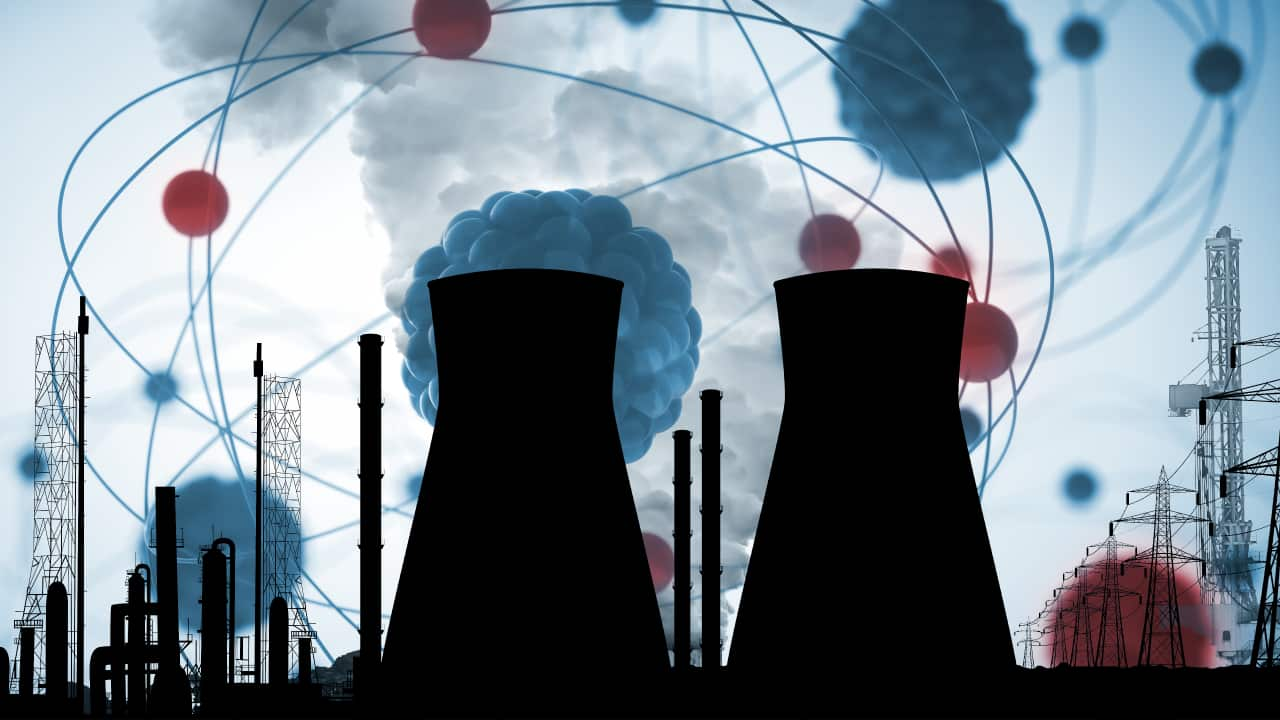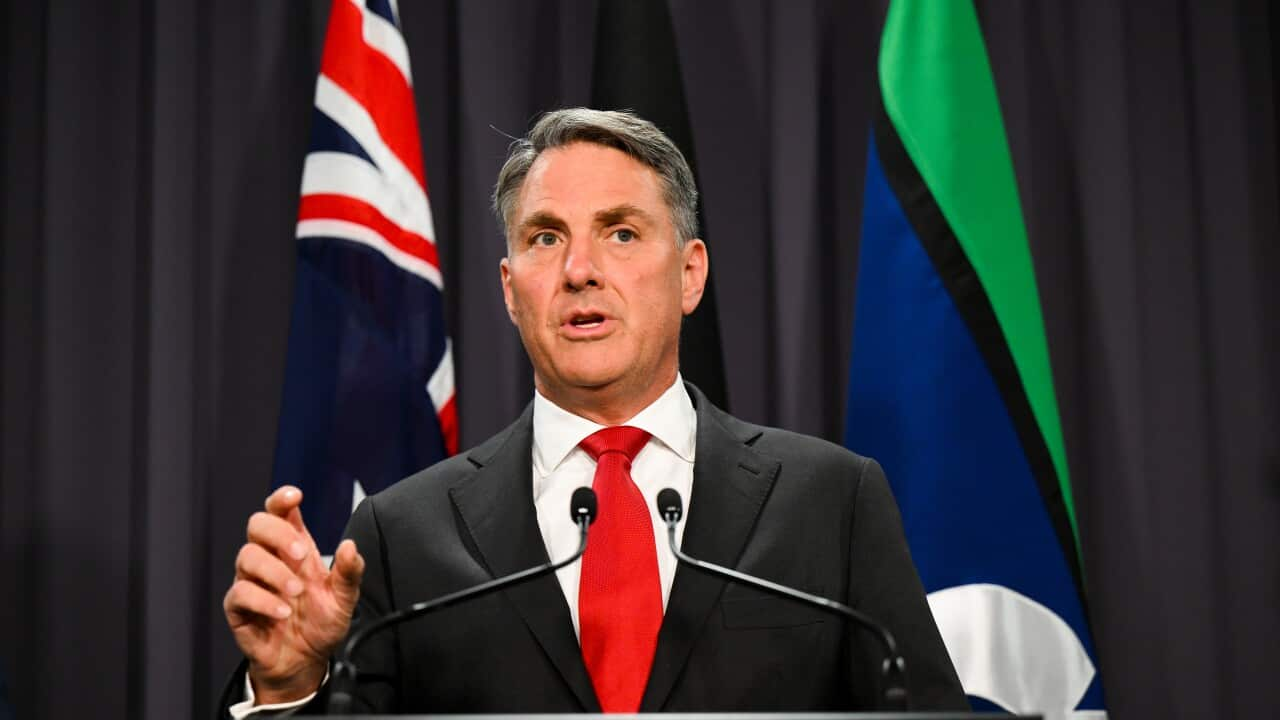Nuclear power has long split the nation.
Australia came close to embracing it in the late 1960s when the-then Liberal prime minister John Gorton proposed the construction of a nuclear power plant at the Jervis Bay Territory on the south coast of NSW.
The project was ultimately abandoned, but the debate raged on and it's been reignited by the federal Opposition. Earlier this month, Opposition leader Peter Dutton touted nuclear as a way to achieve "cheaper, consistent, and cleaner power".
But the federal government has dismissed the idea as "fantasy", insisting renewables are the way forward.
"Australia has the best renewable resources in the world," Minister for Climate Change and Energy, Chris Bowen, told ABC Insiders earlier this month.
So can nuclear power — which generates almost no emissions — play a role in Australia's path to net zero?
What is nuclear power?
Nuclear power uses the energy released by splitting the atoms of certain elements to generate electricity in a process known as nuclear fission.
"About two-thirds of nuclear energy comes from splitting uranium atoms," associate professor Edward Obbard, the head of UNSW's nuclear engineering program, says.
"Some of the uranium turns into plutonium, and the other third of nuclear energy comes from splitting those plutonium atoms in the reactor."
Nuclear power stations have a low carbon footprint because they produce almost no greenhouse gases during their operation.
"There is no chemical reaction. It's not sucking in air and then blowing out smoke. Everything is in the reactor before you begin, and everything is in the reactor when you finish. It's just releasing heat and nothing's coming in and nothing's going out," Obbard says.

Source: SBS News
What is the history of nuclear power?
The first commercial nuclear power stations started in the 1950s and today, they operate in more than 30 countries and generate around 10 per cent of the world's energy. The US, France, China are among the biggest consumers.
But in Australia, nuclear power generation is prohibited by law.
The ban was introduced in 1998, when the government, led by former prime minister John Howard, sought legislative support to build a new nuclear research reactor at Lucas Heights in Sydney. The government accepted an amendment by the Greens that prohibited development of other nuclear facilities.
The Coalition wants to lift that moratorium and see the construction of nuclear power stations at the sites of retiring coal stations.
Dylan McConnell, a renewable energy and energy systems analyst at UNSW, says there is some merit in the idea, but there are many significant hurdles.
"I can see the attraction of putting nuclear plants where coal plants are. However, when you start going into the details, the idea doesn't quite stack up," he says.
McConnell says overturning the ban, regulation, certification and construction would take at least 15 years.
"These are long-term, long-lead time projects. And we don't have the institutional infrastructure or regulatory frameworks to actually do this right now," he says.
"It would be highly unlikely for Australia to have a single kilowatt hour of energy from nuclear power until at least the 2040s."
Conventional reactors vs small modular reactors
"There are two types of nuclear power generation," Emeritus Professor Ken Baldwin, an energy expert at the Australian National University, says.
"One is conventional, large scale, reactors which traditionally, are the same sort of size as coal and gas-fired power stations, or even larger.
"Their main issue is you need several of them to cover the gaps for routine maintenance and downtime. Plus they are not readily rampable. In other words, they can't be turned off and on quickly to allow for changes in demand, for example at peak hours in the evening."
Then, he says, there are small modular reactors — often proposed as a way to firm up renewable energy.
"There are a couple of small modular reactors in Russia and China and so we don't have access to the data on economics and performance," he says.
"And there was one recently that was being proposed in the United States that has had cost overruns and so that's now being withdrawn.
"So until these see the light of day and we have the data on the economics and performance of these small modular reactors, it's going to be very difficult to estimate what the cost is going to be for future small modular reactors around the world and in Australia."
McConnell agrees.
"[Small modular reactors] currently don't exist in the Western world. And they face significant challenges in development and cost. They are unlikely to be available in the countries they are being developed until the 2030s, let alone in Australia."
How much does nuclear power cost?
The CSIRO estimates that by 2030, nuclear power from small modular reactors will be at least three times more expensive than renewable sources.
In its GenCost report, released late last year, the national science agency said the cost of generating one megawatt hour using wind and solar would cost an average of $82 in 2030.
It projected nuclear power from small modular reactors would cost around $282 per megawatt hour by 2030.

Renewables are cheaper than nuclear energy. Source: SBS News
Baldwin backs the report.
"The GenCost report is based on the latest evidence and the latest information from around the world, and it's put together by reputable scientists [at the] CSIRO who undertake a rigorous scientific and valid evaluation of these prospects," he says.
A 'window of opportunity'
Baldwin says there may be a "slight window of opportunity" in the 2040s as a way to decarbonise the last 1 or 2 per cent of the electricity grid.
"Decarbonising the last couple of per cent of the electricity network is going to be very difficult and indeed it will be very expensive for renewable technology to do that," he says.
"Other technologies might then become cost competitive, including small modular reactors, including gas with carbon capture and storage and potentially other forms as well."
Obbard says while it may not be feasible to implement nuclear right now, Australia needs to think beyond 2050.
"There is this sort of misunderstanding that everything has to be done by 2050, but our kids are still going to have to live after 2050," he says.
"A hundred years in the future, climate change might be a survival challenge, and that, I think, would really shift your focus about whether you like nuclear or not."










